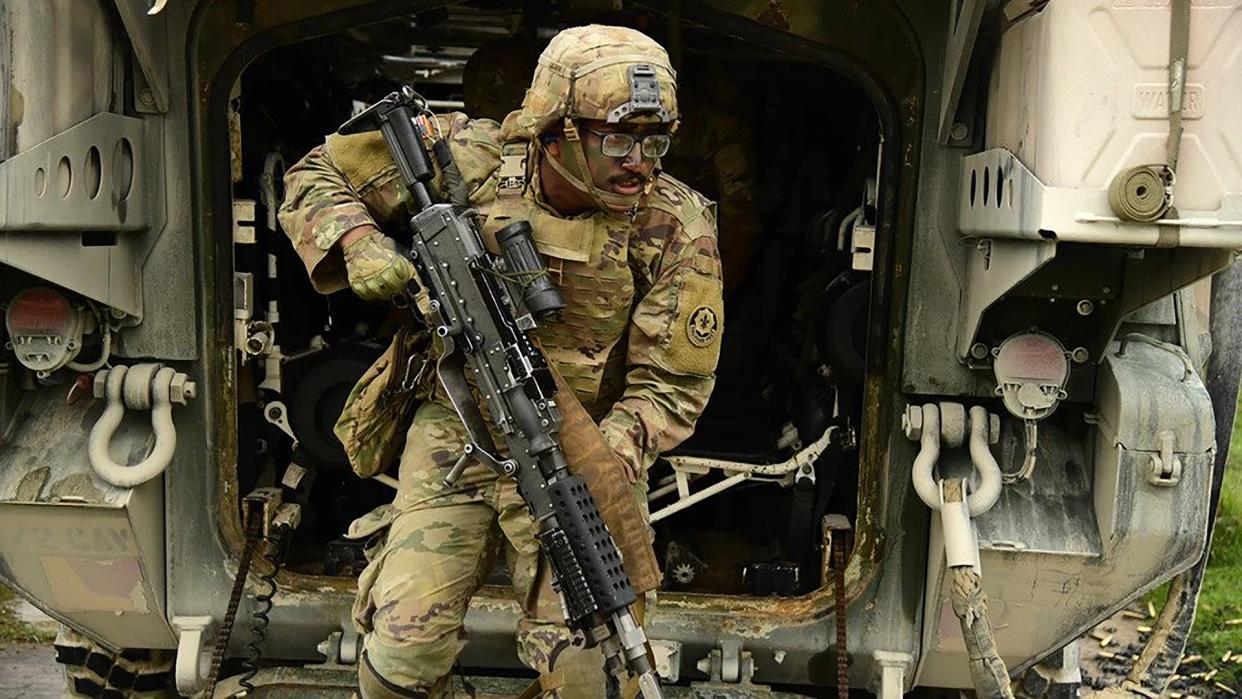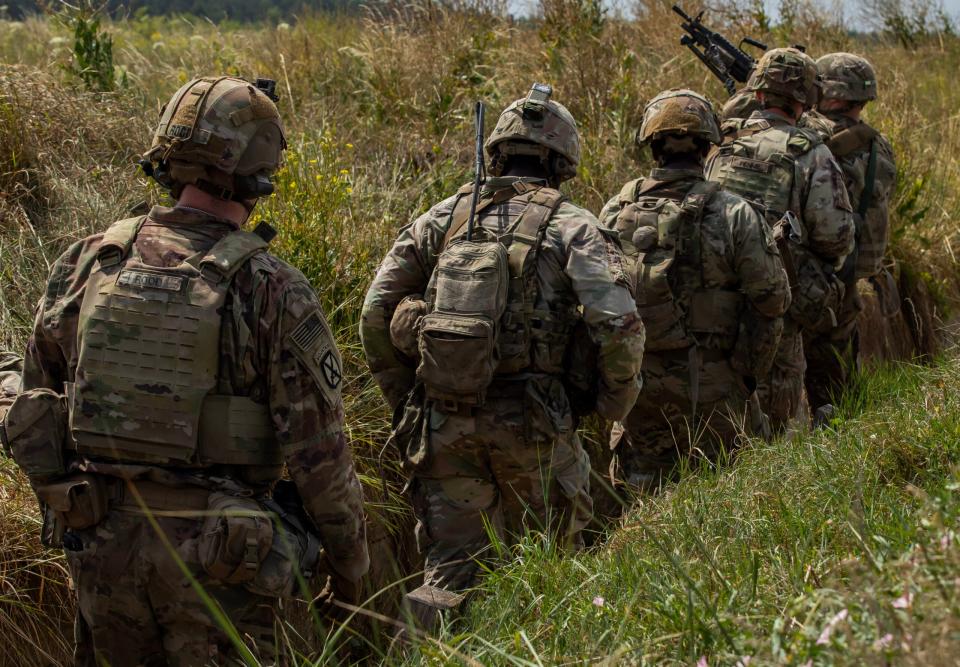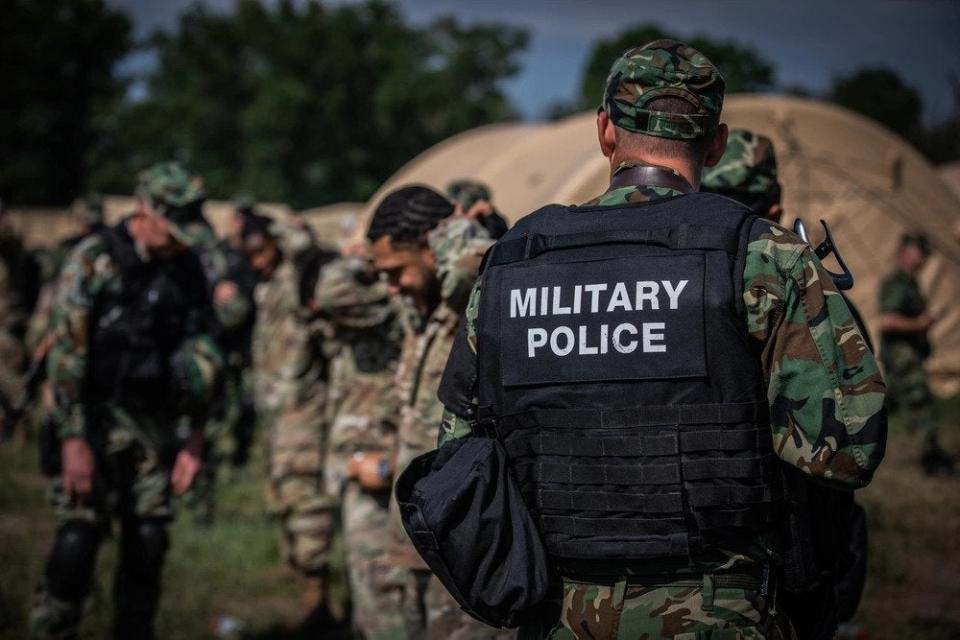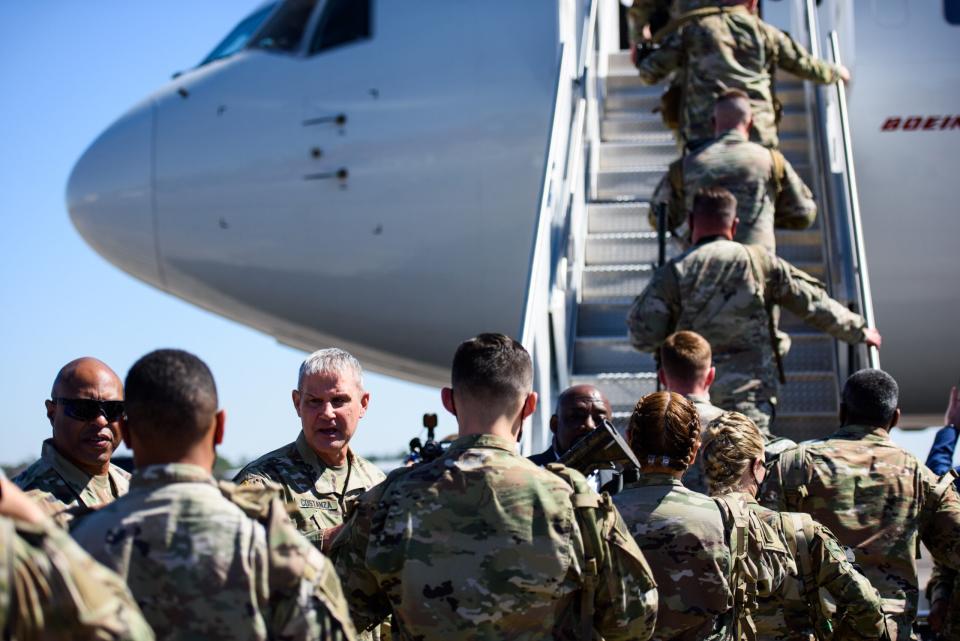What Biden's Troop Call-Up Order To Europe Really Means

When President Joe Biden announced his executive order about U.S. forces in Europe on Thursday, concern ran rampant that America was beefing up for an immanent direct armed conflict with Russia.
But the reality is that the move was designed to replace some currently deployed troops and bolster some critical requirements. It was not meant to add to the 100,000 troops already stationed there — about a fifth of whom were deployed in the wake of Russia's all-out invasion. Still, it sets a new precedent and could open the door to further call-ups.
Biden’s executive order called for mobilizing up to 3,000 reserve troops, of which no more than 450 could be what are known as Individual Ready Reserve (IRR) troops. Those are people who previously served but still have a contingency commitment to the military.

The biggest real impact of all this will be on those IRR forces who have to return to service, a recently retired Army Reserve general officer told us.
“People in the IRR are generally out of the Army Reserve altogether,” said that source. While speaking specifically about the Army, however, the principle applies across the forces.
“In essence, they are now civilians," said the retired officer, speaking on condition of anonymity to discuss Army policy. They do not own uniforms, they do not have units, they do not take physical fitness tests, they don't take physical examinations, they are just like you and me doing their day-to-day jobs thinking that their military time is behind them.”
If called up, “they will get a phone call, followed by a letter stating that they are being involuntarily mobilized. There is an appeal process, but it is generally cursory in nature. Unless they have a special needs child as a single parent, or serious medical conditions, they are being mobilized.”
This all comes as tens of thousands of additional U.S. troops were sent to Europe beginning in February 2022 to bolster presence there in support of allies in the wake of Russia's aggression toward Ukraine. But the Biden executive order does not signal an increased U.S. presence, Pentagon officials say.
“These are not additional forces...” Lt. Gen. Douglas Sims told reporters, including from The War Zone, Thursday. “So as an example, over time, where we may have had someone from an active-component organization doing something, that job now under these authorities may be something that a reserve component unit may be able to do.”
Friday, the Pentagon’s top spokesman further clarified to The War Zone what this means.
“The Army and Air Force have identified a number of critical billets it may activate under this authority,” Air Force Brig. Gen. Pat Ryder said in an email to The War Zone. “These activations would primarily provide support to our forces and include capabilities such as contracting, military police, dental support, human resources, and finance. Replacement of some combat forces is also possible.”

Biden’s order turned a nearly decade-old mission called Operation Atlantic Resolve into a contingency operation akin to Operation Inherent Resolve in Afghanistan and Operation Iraqi Freedom in Iraq that were stood up in the wake of 9/11. As a result, it gave the Pentagon the ability to mobilize the reservists and offer them the benefits active duty troops receive. It also increases the rapidity at which those troops can be supplied.
This new designation “benefits troops and families with increases in authorities, entitlements and access to reserve component forces and personnel,” Sims told reporters on Thursday.
Based on the level of presence and operations in the U.S. European Command (EUCOM) area of operations, the Pentagon’s support requirements have grown, said Sims.
As Russia threatened and then fully invaded Ukraine in February 2022, the U.S. began to add what turned out to be an additional 20,000 troops to Europe. More than a year after that plus-up, the military may be feeling the strain of supporting all those additional troops.

“These authorities will enable the department to better support and sustain its enhanced presence and level of operations in the U.S. EUCOM AOR,” said Sims. “Lastly, this reaffirms the unwavering support and commitment to the defense of NATO's eastern flank in wake of Russia's illegal and unprovoked war on Ukraine.”
EUCOM will decide on its needs and work with the services to figure out which reserve troops to send and which IRR troops to call up.
But no decisions have been made, Ryder noted to us.
“Specific unit activations would be announced as units and personnel are notified, but again we have no activations to announce at this time,” he said.
The executive order “applies to reserve component forces, which as you know includes Guard and Reserve," said Ryder. "So until specific units are tasked and orders generated, I can’t speculate on whether that’ll mostly be comprised of US Army Reserve or not.”
Given the amount of time the additional U.S. forces have been in Europe, Army officials have for a while been discussing rotating Guard and Reserve force into Europe to replace active duty troops, as Army Times reported Davis Winkie noted in this thread:
https://twitter.com/davis_winkie/status/1679665172972011520?s=46\u0026t=BQRSNakUKt7_8ssZiGBW-A
However, one recently retired Army Reserve general officer we spoke with said the move sends the wrong signal and is a sign of poor readiness among the Reserve forces.
“It is sending an unintended signal,” that former general officer told The War Zone, speaking on condition of anonymity to discuss sensitive issues. “We are trying to show strength, but it's instead revealing the true state of our ability to man, train and equip a ready force. It signals that we didn't have the active forces, and that the Army Reserve is in a poor readiness state to even respond to a 3000-person call-up without reaching into the IRR. An intended signal of strength is instead sending a signal of weakness. That's not a good signal.”
Army headquarters couldn't comment because no deployment decisions have yet been made. We’ve reached out to the Army Reserve for comment and will update this story with any response provided.
So no, this is not an imminent sign that a third world war is upon us, but it does show the strain on a force long in surge deployment mode and would make it possible to deploy more troops in a similar manner in the future.
Contact the author: howard@thewarzone.com

